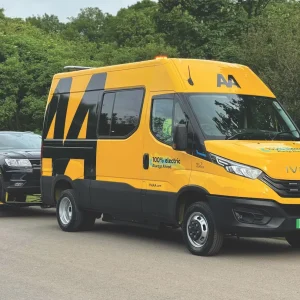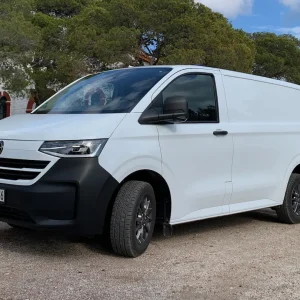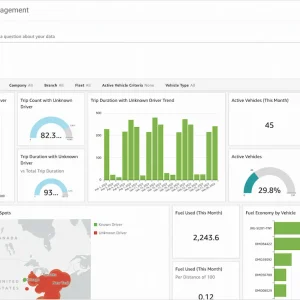From April an Ultra Low Emission Zone (ULEZ) will be in place in central London, meaning diesel cars, vans and minibuses that do not meet Euro6 emission standards will be unable to enter unless a daily charge of £12.50 is paid.
Forget to do this (or stray into the area accidentally) and you’ll be hit with a penalty of £160.
Leeds, Birmingham, Southampton, Derby and Nottingham are also all at various stages of planning their own clean air zones.
Interestingly, Transport for London’s (TfL) website suggests you may wish to “upgrade to a second-hand vehicle that meets ULEZ standards” or that “leasing a vehicle may be a more affordable way to get a vehicle that meets the emissions standards”. This raises the question as to the effect this legislation may have on the residual values of pre-Euro6 vans, the assumption being that the market will vanish in inner-city areas and reduce further afield where operators still need to work in these urban centres.
“The publicity surrounding the ULEZs is now stepping up and over the next 12 months it is anticipated that vehicles that achieve the correct Euro standard will be in more demand than vehicles that do not,” says Steve Botfield, commercial vehicles senior editor at vehicle valuers Cap HPI. “The caveat to this will be down to the area the purchaser anticipates he will be entering. Those that are not affected by any ULEZ will benefit from the lower-valued pre-Euro6 models”.
James Davis, director of CVs at Manheim Auctions, sees demand for later used vans being maintained, but offers a word of warning to those with much older vehicles: “With five million businesses in the UK, the majority being micro-businesses with a turnover of less than £1m, and between 600k and 700k new start-ups every year (and 200k-300k winding up) the demand for used CVs is clear to see.
The demand for new is driven by business confidence, legislation and operating and funding models. These new vans are tomorrow’s used vans, and it’s clear those operators will increasingly look to update their vans. I predict a superheated used market in the next two years as a result. I’d warn owners and operators of older vans to realign their expectations of the exceptional financial returns they’ve enjoyed in the last decade. I can see demand for these will soften as the ULEZs expand in the early ’20s”.
Andy Picton, chief CV editor at used vehicle valuation experts Glass’s, suggests the picture may not be as gloomy as some predict: “Initially, there will be little impact on smaller businesses, as those operating older vans and who infrequently travel into a CAZ [clean air zone]/ULEZ, will pass the charge onto the customer. Many are holding back from major fleet purchases – with some switching to short-term/flexi-rental until the confusion over Brexit clears.
That said, vans that are no longer able to be used in London can still be easily sold into another part of the country without suffering a penalty, so RVs are unlikely to be affected in the short to medium term.

The boundary for London’s ULEZ, which becomes active from April 2019
Stuart Pearson, chief operating officer UK remarketing at auction firm BCA, also remains optimistic: “At this stage no-one can predict exactly how the market will react to the expansion of low-emission zones (LEZs). It is inevitable there will be some pricing sensitivities – however, BCA serves a nationwide market and with the ever-growing demand from small to medium-sized businesses for good quality used vehicles, there should be more than sufficient demand to maintain interest for older Euro3/4/5 LCVs from any buyers not affected by potential extensions of ULEZ zones.”
On the introduction of the London LEZ for vans in 2012 there was a trend for older used vehicles to be disposed of in areas away from the south east of England where the emissions would be less likely to affect the sale price.
With the trade more confident at buying unseen via online auctions (and, indeed, retail customers committing to a purchase from a dealer from a description and photos), our experts generally think the location of a vehicle is less critical. Stressing the benefits of online bidding, Pearson says: “BCA Live Online allows in-lane and remote bidders to compete for the same vehicles, generating maximum buying power and meaning the vehicle’s precise location when sold is not a significant issue”.
Cap HPI’s Botfield adds: “With the growth in online platforms and websites the location of vehicles today does not preclude any trader from purchasing anywhere in the country. However, the savvy trader will know what stock he needs to hold based on his geographical location and buyer base.”
Meanwhile, Picton says: “Although there is no immediate pressure on vendors to push newer Euro6 used vehicles towards those areas where only the cleanest stock is allowed without penalty, it would be sensible to assume that as more CAZ/ULEZ come into force, so the cleanest vehicles will be sold into and around those areas. That said, older and dirtier vehicles can still be sold into other parts of the country without suffering a penalty, so RVs are unlikely to be affected in the immediate future”.
Manheim’s Davis suggests the roll-out of CAZs means some operators may well be just putting off the inevitable.
“In 2020 Birmingham, Southampton, Nottingham, Leeds and Derby aim to roll out their CAZs – or ULEZs – so it’s highly likely only Euro6 vans… will operate in those cities without a penalty,” he says. “Be under no illusion: older, high-emitting vans and trucks and cars – all diesel – are being legislated out of our cities. Next it will be towns and entire regions. And it will happen relatively quickly.”
Are used alternatively fuelled vehicles perfect future-proofing?
Steve Botfield, CAP HPI
“With the government’s launch of its Road to Zero document the push is into alternative methods of propulsion away from the internal combustion engine (ICE). However, a number of manufacturers are going down the plug-in hybrid (PHEV) route to overcome some of the factors that limit the use of EVs, which are range and performance. Therefore, the demand for EVs and PHEVs will develop based upon the initial operator’s use, and this, of course, will be no different from that of the subsequent user. However, the same hurdles as the first user – of range, performance, cost, choice and charging infrastructure – must be accepted by the second and third buyer because if the figures do not stack up what incentive is there to change?”
Andy Picton, Glass’s
“The used market should be healthy as there are many who believe the buyer of a used van travelling short distances each day is ideally suited to electric LCVs. But with the current lack of choice, poor infrastructure (outside of major towns and cities) and a lot of conflicting information, many travel back down the tried and tested route of an ICE vehicle as their weapon of choice. But we’re starting to see traders who only buy and sell alternatively fuelled vehicles, while others in and around London only stock the latest Euro6 vehicles. Others will follow and hopefully the word will spread”.





